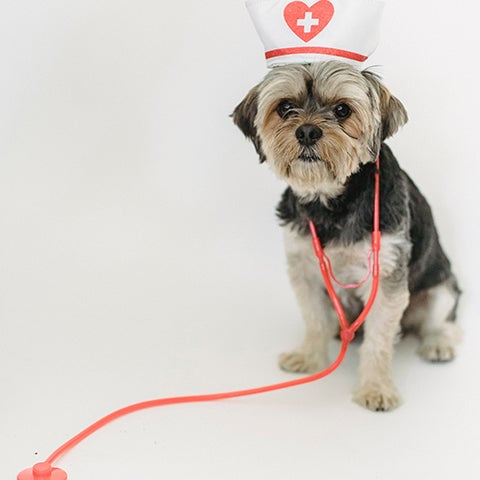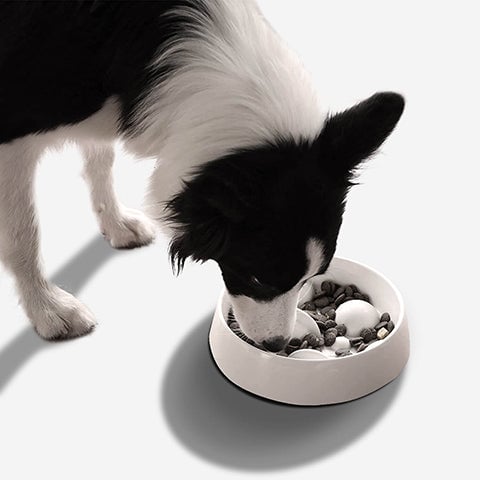
As a pet owner, you must know the indicators, risks involved, and preventive measures of Parvovirus to make sure your dog will live a healthy life. In short, it is known as Parvo in dogs, a direct virus formed due to contaminated feces.
Less than one-year-old dogs or puppies not more than five months of age are more prone to get this virus. The main concern is that its treatment is difficult, and the chances of rapid deaths are higher. So, It is common among puppies but with deadly consequences.
The following category of Dogs have more risk of this virus than other breeds;
- German Shepherds,
- English Springer Spaniels,
- Rottweilers,
- Doberman Pinschers,
- Labrador Retrievers and American Staffordshire Terriers.
What is Parvo in Dogs?
The Parvovirus is prevailing among us right from the 1970s, can infect in large numbers among dogs, and is not easy to disinfect. So, it might be present on a park, yard, floor, or carpet.
In we go into the details, CPV-2 or Canine Parvovirus type 2 virus is responsible for the cause of Parvo in Puppies and Dogs. It affects their immune system and gastrointestinal tract. This highly contagious virus can also harm the heart of the puppies at a young age.
Young dogs and puppies are more susceptible to this virus. It will start shedding on puppies in 4-5 days of exposure. It will remain to shed in the puppies with Parvo for ten days until clinical recovery.
Parvo is very contagious and spreads among dogs with ease. Hence, dog breeders, caretakers, or owners should be aware of it to take any prevention steps or measures to stop parvovirus.
Parvovirus can remain on the surfaces or surroundings for a long time! The virus can withstand many temperatures, conditions, and disinfectants. The transmission of Parvo can happen via direct contact with an infected dog. Humans can carry it on their shoes, clothes, or skin.
The possibility of infection on a dog depends on three main factors. These are;
- a) Strain/strength of the virus,
- b) Environmental factors, and
- c) The immune status of the host.
Infected Dogs carry fecal particles on their paws or hair. The infection is possible while a Dog steps into the infected feces out of the home. A dog can also catch the infection after sniffing or licking contaminated surfaces like carpets or drinking bowls. It can also be due to direct contact via mouth or nose with infected vomit, saliva, or feces.
What are the Signs of Parvovirus in Dogs?
There might be chances of infection in your dog if they are suffering from any of the following Parvo symptoms;
- Weakness
- Fever
- Lethargy
- Dehydration
- Loss of appetite
- Bloody diarrhea
- Severe vomiting
The virus might also sub clinically infect a dog. So, in this case, the patients do not look sick, but they can spread the virus on a broader prospect wherever they leave their droppings. So Diagnosis in any indication of Parvo symptoms should happen on time to prevent it from being severe.
What to do for the Treatment after Signs of Parvo in Dogs?
After the initial infection, the virus remains on the stool for hardly two weeks. However, a tiny portion of the infected stool remains there for months. It could affect the environmental humidity and temperature.
On the other hand, Puppies generally lack antibodies to fight any infections. However, they get some antibodies from their mother’s colostrum, but they will not remain in their body for longer.
The virus should be caught and treated early to avoid any risks to a dog's life. Parvo straight attacks the white cell count inside dog blood. Hence, their ability to fight the infection would be less. So immediate veterinary attention is a must for an ill dog for the necessary treatment.
A Parvo patient gets treatment in the hospital with injectable and oral medications, IV fluids, & even tube feeding (if needed). These include pain management, anti-vomiting pills, and antibiotics.
Regular blood tests of the infected dog are needed to see the progress of the treatment. Many factors are considered in such a lab test of a patient’s blood. It includes glucose levels (hypoglycemia), platelets, red blood cell count, and white blood cell count. Protein levels are also analyzed to see if they are low.
If we consider the best treatment, then the DA2PPv vaccine is necessary to prevent Parvo from happening to puppies. It is otherwise known as Distemper-Adenovirus Type2-Parainfluenza-Parvovirus. In the case of aggressive treatment, the survival rate goes to 90%, as per studies.
In case of confusion about the treatment, Contact your vet sooner possible!
How Do I Prevent My Dog’s from getting it?
As per veterinarians, the rate of survival of dogs from the Parvovirus is between 68-92 percent. At the same time, it is so difficult to refrain your dog from getting in contact with the virus. Also, you cannot kill the Parvovirus on any surface or object with ease. The virus can live in an environment for one or more years.
Parvovirus can attack Dogs when they Play with contaminated objects or Eat, lick or sniff the feces. It could be present in Apartment complexes! Dog parks or municipal parks are generally contaminated with parvovirus.
The virus can harm only dogs! So humans and other species are safe from it, but. The virus can be transmitted from them to other Dogs when someone is exposed to an infected area or pet.
Regular and Routine Vaccination is an effective way to save your dog from such a virus. Elder dogs with regular vaccination have very few chances of illness or infection.
There are a series of vaccinations for Parvo plus some booster shots whenever needed in a Dog's life. We should know that after vaccination, the puppies will not gain full immunity from the virus until two weeks.
So, do not let your incomplete/unvaccinated puppies be in unsafe places like kennels or with unvaccinated dogs. Puppy school and socialization should also be safer for the puppy.
Not to neglect, one of the best preventive ways is to let your puppies stay away from any other dog until their complete vaccination dose.
Post-Treatment Measures: Why is it Important? Not to be overlooked!
You need to take much care throughout and even after the treatment process of your infected puppy from Parvovirus. After all, it is about the health of other dogs and puppies in your home as well.
The virus can withstand the ground even in the freezing temperatures during winter. Also, many home disinfectants are not able to kill them indoors. So, the most effective disinfectant to reduce many viral particles of the virus is Bleach.
Mix one part with the 30 parts water and apply this solution to anything that will not lose its color. Let the solution stick to any surface or object for a minimum of 10 minutes to kill the virus. You can also use steam cleaning for the same purpose.
For non-bleaching surfaces like lawn or carpet, you need to disallow your puppy to access such an area for some months. It is because washing them is not the right solution for disinfection.
It takes a minimum of one month for any area at indoor to lose its virus infectivity and be safe for a new puppy. However, it needs at least 5 to 7 months for the contamination to disappear from an affected place outdoor.
Training and socialization are essential for puppies, but. Make sure they allow only vaccinated contestants or take some caution for it. You can also ask your vet about the best means to disinfect or remove the parvovirus from the kennels or home environment.
Final Thoughts
By knowing everything about Parvo in dogs (an incredibly resilient virus), you can give better protection and improve their chances of fighting it. Whether it's ensuring your dog has a calming dog bed for comfort during recovery or contacting an expert when you spot Parvo symptoms, don't waste time. Additionally, you can always enquire about Parvo boosters and vaccinations that will help protect your furry friend or family member in the future!






